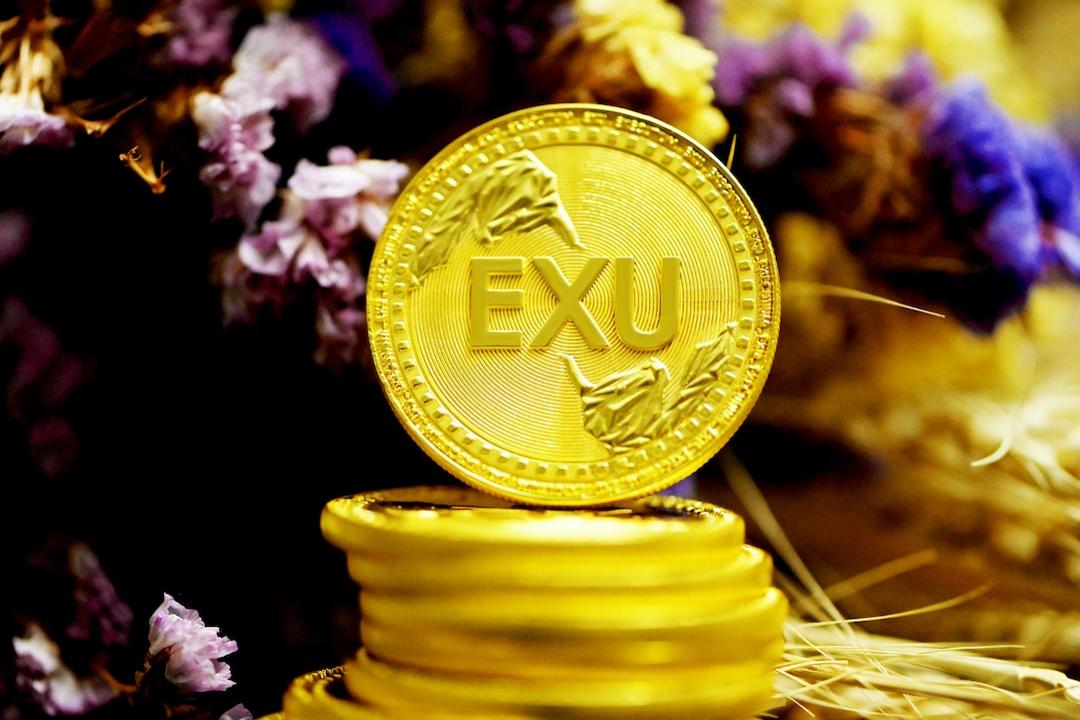CoinWorld.com Reports:
Title: Why Ether Stands Out Among Digital Assets
Author: Lorenzo Valente, Ark Invest Research Analyst; Translation: 0xjs@
Introduction:
As Bitcoin solidifies its position as a reliable digital store of value and the only asset with rule-based monetary policy, the Ethereum network and its native asset Ether (ETH) seem to be gaining momentum with similar potential. In fact, ETH is becoming an institutional-grade asset with revenue potential.
As the only truly revenue-generating digital asset, ETH appears to have unique and distinct characteristics that make it a “benchmark” within the digital asset space. ETH has played a critical role in both private and public financial markets, influencing the monetary policies of other digital networks and applications, and measuring the health of the broader digital asset ecosystem. The market capitalization of the Ethereum network is approximately $315 billion, with millions of active users monthly, as shown in the following figure. The Ethereum network is realizing meaningful economic value.

Source: ARK Investment Management LLC, 2024. This ARK analysis is based on a range of underlying data sources that are available upon request. Data as of August 15, 2024. For reference only and should not be considered as investment advice or a recommendation to buy, sell, or hold any specific security or cryptocurrency.
The yield of ETH staking has influenced other smart contract ledgers, setting it apart from other digital assets beyond Bitcoin.
Similarly, US Treasury bonds play a crucial role in traditional economies, serving various purposes: setting benchmark interest rates, acting as a safe store of value during uncertain periods, and influencing market expectations of future economic conditions. Our research suggests that ETH is developing bond-like attributes as an asset in the digital asset space. The revenue potential of ETH, along with its extensive use as collateral in digital asset transactions, is becoming its two most unique and important qualities.
Investors can protect the Ethereum ledger and earn ETH yield by staking ETH. In other words, technically, this yield is not the native yield of ETH assets. Liquidity staking derivatives like Lido, Rocket Pool, or Frax offer methods to tokenize staked ETH and its yield. Liquidity staking allows users to stake their ETH and receive derivative tokens representing their staked ETH while maintaining liquidity. An alternative method called “solo staking” offers more direct control over staked assets and higher returns but locks up the ETH.
The goal of this article is to identify and define the unique characteristics of ETH. What sets ETH apart? How does it stand out in the broader asset landscape?
We aim to address the following questions:
1. How does ETH generate yield?
2. How does Miner Extractable Value (MEV) yield predict economic cycles?
3. Does ETH possess bond-like attributes?
4. Does staking and re-staking enhance ETH’s ability as programmable collateral? If so, how?
5. Will ETH staking yield become the benchmark yield of the crypto economy? If so, in what sense?
6. What are the hybrid attributes of ETH in the standard classification of traditional assets?
1. How does ETH generate yield?
“Proof of Stake” (PoS) is a relatively new consensus algorithm that is more energy-efficient than “Proof of Work” (PoW). Why? In PoS, the consensus algorithm selects “validators” – equivalent to “miners” in PoW – to create new blocks and validate transactions based on the number of tokens they hold and are willing to stake as collateral. The more tokens staked, the higher the probability of being selected to build and validate the next block. Thus, PoS systems do not require significant computational mining power but demand validators to invest heavily in the network – if they validate fraudulent transactions or violate core protocol rules, they may lose their stake. Validator staking acts as a deterrent to fraudulent behavior, similar to how the energy costs paid by Bitcoin miners to participate in the network prevent fraudulent behavior. Both ensure that each participant acts with economic rationality and integrity.
When the Ethereum network transitions to Ethereum 2.0, its protocol will shift from Proof of Work to Proof of Stake. The implementation of the latest monetary policy upgrade, EIP-1559, introduces a novel fee market structure. These two changes alter how ETH generates and distributes revenue.
The yield of ETH is based on three components:
Issuance (
≈2.8%
APR
)
+ Tips
(
<0.5%
APR
)
+ MEV
(
<0.5%
APR
)
Let's delve into each component of the yield in more detail.
Issuance:
As of September 2024, the Ethereum network adds approximately 940,000 ETH per year, translating to an annual percentage yield (APY) of around 2.8% based on today's staking rate. The staking rate varies over time based on the amount of ETH staked. If there are more staking validators, the staking rate increases, reducing the issuance yield as the issuance yield is distributed on average among participating validators based on their weighted stake. It is important to note that the Ethereum network guarantees a minimum annual issuance rate of 1.5%, which would require 100% of ETH staked and no transactions on the blockchain, which is highly unlikely. All validators securing the network by achieving consensus and processing transactions receive issuance.
Tips:
"Tips" are optional fees introduced by the London upgrade and EIP-1559. Users can include these fees in Ethereum transactions. Tips act as "priority fees" as they incentivize validators to prioritize processing transactions within a block.
When users want to send a transaction, they must pay a base fee and can optionally pay tips. The base fee dynamically adjusts based on network congestion, increasing when the network is busier. If users want to speed up transaction confirmation, priority fees or tips are optional. In essence, priority fees are a cost that fluctuates based on network usage and congestion.
MEV:
In addition to issuance and user tips, validators also earn Miner Extractable Value (MEV) rewards, which are additional profits obtained by including, excluding, or reordering transactions in the blocks they generate.
MEV is analogous to Payment for Order Flow (PFOF) in traditional markets - additional income paid by high-frequency market makers and traders to validators in exchange for prioritizing their order flow. Similar to priority fees, its yield is volatile as it depends on the supply and demand of block space and exploits less-informed traders transacting on the network. Importantly, MEV rewards are only applicable to validators running MEV clients like MEV Boost.
Base Fee:
It is important to note that the base fee (again, emphasizing the standard cost of sending a transaction) does not impact the yield. Instead, it is "burned," providing no direct cash flow to stakers. As part of the EIP-1559 upgrade, the base fee mechanism makes fees more predictable and the Ethereum network more user-friendly.
Only the base fee and issuance can alter the total supply of ETH. ETH tokens paid as base fees are permanently removed from the total supply. If the base fee is high enough (currently above 23 gwei in today's market) and the amount "burned" exceeds the network issuance (940,000 ETH per year), the total supply of ETH will decrease over time, leading to protocol deflation. Conversely, if the network issuance exceeds the burned base fees, the network will experience inflation.
Two dynamics support the deflationary trend in ETH supply. First, Ethereum's Proof of Stake (PoS) mechanism allows validators to reduce operational expenses (Opex) and capital expenditures (Capex) associated with running network servers. In other words, the energy and data center costs associated with PoW and ASIC machines do not exist in PoS.
Second, as a leading smart contract platform, the Ethereum network operates with a limit of 14 transactions per second at the base layer. Thanks to rigorously tested code, Ethereum has attracted the most active developers, the widest range of applications, and the highest settlement value in just nine years of its development journey.
Since transitioning to PoS and implementing EIP-1559 on September 15, 2022, ETH has acted as a net deflationary asset, reducing its supply by an average of 0.106% per year. If Ethereum continues to operate on PoW without transitioning to PoS and without EIP-1559, the network's supply would inflate by 3.2% per year, as shown below.

Source: Ultra Sound Money. Data accessed on August 15, 2024. Comparison of inflation rates between ETH (PoS) and ETH (PoW) versus BTC (PoW) since the merge. For reference only and should not be considered as investment advice or a recommendation to buy, sell, or hold any specific security or cryptocurrency.
2. How does Miner Extractable Value (MEV) yield predict economic cycles?
As mentioned earlier, Miner Extractable Value (MEV) yield is part of the ETH staking yield. In this section, we will delve deeper into MEV, focusing on how it is generated and how it predicts economic activity and market cycles.
MEV is equivalent to Payment for Order Flow (PFOF) in traditional finance, occurring when market makers and high-frequency trading firms pay additional fees to validators to bypass the standard Ethereum mempool queue and prioritize their transaction bundles. Similarly, in traditional finance, companies like Citadel Securities pay fees to platforms like Robinhood, TD Ameritrade, Charles Schwab, and Fidelity to route customer order flows to them. In essence, MEV emerged during the 2017 ETH ICO frenzy as a basic form of priority “bribe.” During the ICO era, participants and investors buying tokens of certain projects had to deposit ETH into smart contracts in exchange for the project’s native tokens. As these tokens grew in popularity, token issuances became oversubscribed and operated on a first-come, first-served basis. To be among the first to deposit ETH into these smart contracts, participants “bribed” validators off-chain.
Like PFOF, MEV typically reflects retail trading activity as market makers are willing to pay higher prices for uninformed orders compared to informed orders. Just as PFOF payments serve as a gauge of excessive retail spending and risk appetite in the stock market, MEV also plays a similar role in predicting downturns and economic cycles in the Ethereum ecosystem, as shown below.

Source: ARK Investment Management LLC, 2024, based on data from Daytradingz.com and MEV-Explore v1 as of June 9, 2024. For reference only and should not be considered as investment advice or a recommendation to buy, sell, or hold any specific security or cryptocurrency.
While MEV on Ethereum generates income comparable to PFOF in the stock market, the percentage of MEV relative to the total market value of ETH and ERC-20 tokens is much higher than the percentage in the US stock market. Since the merge, the annualized $790 million extracted income represents 0.20% of the $315 billion market value of ETH. Considering the total market value of ETH and ERC-20 tokens is approximately $5 trillion, the extracted income percentage drops to 0.15%, still 27 times higher than the 0.0056% of PFOF income ($2.891 billion) relative to the $50 trillion market value of the US stock market. In the early stages of development, ETH had a higher MEV yield compared to today due to the lack of competition among MEV extractors. Nevertheless, MEV remains a unique attribute of Ethereum’s economic activity.
In conclusion, ETH stands out among digital assets due to its revenue-generating capabilities, bond-like attributes, and the ability to serve as programmable collateral through staking and re-staking. Its MEV yield contributes to the prediction of economic cycles and reflects retail trading activity. The hybrid nature of ETH makes it a distinctive asset within the traditional asset classification.
Note: The translation has been provided without any changes or additions.

